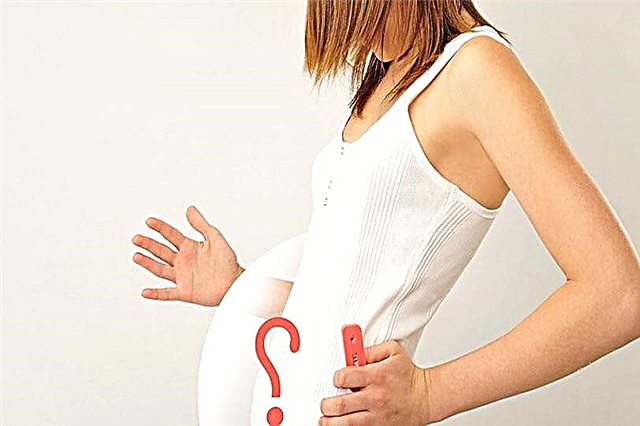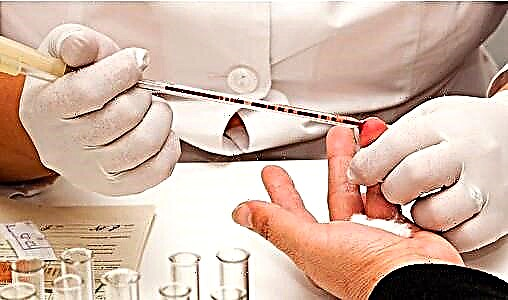
An unpleasant and painful ailment - hemorrhoids - a frequent "guest" at the very end of pregnancy. Even if a woman has never had anything like this, it is in the third trimester that the moment may come when the symptoms of the disease appear for the first time, because the uterus, which has reached a large size, presses on the inferior vena cava, disrupting blood supply, including in the hemorrhoidal veins.
How to relieve unpleasant symptoms and cure hemorrhoids in the last weeks of bearing a baby, we will tell you in this article.

General principles of treatment
Hemorrhoids, both external and internal, during pregnancy are difficult and troublesome to treat. Not all medications can be taken, moreover, the most effective way to combat this ailment - surgical - is not suitable for women in a "position".
Operatively during this period, only very complex cases of the disease are resolved, in which the venous nodes fall out of the anus ring, while there is a fairly strong anal bleeding, and the nodes are not set manually.
Such hemorrhoids in pregnant women are rare. Therefore, in most cases, there is no need for surgical intervention. It is accepted to treat hemorrhoids in the third trimester in a comprehensive manner, combining different methods - from taking medications (systemic and local action) to correcting the lifestyle of the expectant mother.
They always start with correction, and if the disease is not neglected and chronic, it sometimes manages to be limited to it.


Regardless of the degree and nature of the disease, treating hemorrhoids in the third trimester is considered a simpler task than treating a similar ailment at an earlier date.
The choice of medicines for this period is not as limited as during the period of active growth and development of the baby, the laying of its internal organs. However, the doctors do not rely on medications, but on changes in the lifestyle of the pregnant woman, which should have a beneficial effect on blood circulation in the hemorrhoidal veins.

Nutrition
This is the basis for the treatment of hemorrhoids during pregnancy. When the first symptoms of the disease appear (pain, burning and itching in the anus), a woman should definitely reconsider her daily diet, nutrition should be balanced and such that a woman does not have preconditions for constipation.
For this, the entire daily menu is divided for 5-6 receptions, the expectant mother should eat fractionally and in small portions, avoid overeating. Foods that thicken stool should be avoided.
It is important for a woman to prevent not only constipation, but also excessive softening of feces, because diarrhea will cause a lot of unpleasant sensations, the inflammatory process in the rectum and in the anus will only intensify.


If hemorrhoids appear, then you should completely abandon fried foods, smoked foods, salty and too sweet. All spicy foods, spices and seasonings are also banned. To the maximum, you should limit food with a high content of animal protein - cottage cheese, sour cream, butter; you need to eat meat and fish, but in very small quantities, only satisfying the needs of a growing baby in such substances. The abundance of protein foods contributes to the violation of intestinal motility and problems with bowel movements.
Foods that can cause intestinal gas, such as legumes, yeast baked goods, chocolate, and grapes, should be avoided. Don't drink carbonated drinks.


The expectant mother will benefit from raw vegetables and fruits, since the fiber they contain quickly and gently helps to eliminate constipation, makes the passage of feces through the intestines easier. Porridge-spreads (with the exception of rice and semolina), beets and dishes from it, prunes will be useful.
It is important to adhere to such a diet not only during the period of exacerbation of hemorrhoids, but also the rest of the time, even if it seems that the disease has completely receded - hemorrhoids tend to come back.


Toilet and hygiene
The correct approach to hygiene and going to the toilet should be an integral part of the treatment of a delicate illness. Unfortunately, none of us were taught to walk properly when we were in need. If hemorrhoids appear, it's time to learn how to do it.
You should empty your bowels in one go. The bowel movement should not last more than five minutes. Sitting on the toilet with a book or phone in your hands for half an hour or longer is a sure way to the appearance and exacerbation of existing hemorrhoids.
When a pregnant woman sits on the toilet for a long time, the blood supply to the hemorrhoidal veins is disrupted, and the manifestations of the disease may increase.
Going to the toilet correctly is to empty the intestines, as far as peristalsis allows, and then leave the toilet and return to it only when there is a clear urge to defecate.


During an exacerbation of hemorrhoids, do not use toilet paper. Mechanical friction will only increase the swelling and inflammation in the anus. It is best to wash yourself after each bowel movement.
Enemas for pregnant women are not prohibited, but they should be done with great care and only when necessary. In order to prevent the onset of dysbiosis with constant washing out of beneficial flora from the intestines, when enemas are done often, it is better to use not the usual "pear" or Esmarch mug, but microclysters that are sold in pharmacies.
When using topical medications, it is important to follow all hygiene rules - wash yourself after each bowel movement, wash your hands thoroughly before applying ointment to a sore spot or introducing a rectal suppository, monitor the cleanliness of the caps and applicators if you use a drug in the form of a gel or ointment.


Medication treatment
Despite the large selection of various medicines for hemorrhoids, the choice of a particular drug in the 3rd trimester of pregnancy should be approached with great care. A doctor should do this, self-prescription and self-medication while waiting for a child are inappropriate in principle.
With hemorrhoids of 1-2 degrees, local drugs are sufficient. They come in the form of ointments and suppositories. Sometimes candles are ineffective or bring only slight relief, despite the fact that the woman follows all the recommendations and eats right. If hemorrhoids cannot be cured within 1-2 weeks by local remedies or the disease has more pronounced symptoms, systemic agents can also be prescribed - in capsules and tablets.
Local remedies for the most part have wound healing and anti-inflammatory effects, improve blood supply in the area of inflammation, and reduce edema.

Systemic drugs act throughout the body and improve blood circulation, prevent blood clots.
Drugs for systemic hemorrhoids allowed in the third trimester - table:
Topical preparations allowed in the third trimester - table:
Folk remedies
The choice of alternative medicine recipes should be approached with the same caution as the choice of medications. Herbs can harm both the expectant mother and her baby. Therefore, the lion's share of the funds that “experts” advise for hemorrhoids at 7-8 months of pregnancy on numerous Internet resources are not suitable for treating expectant mothers.
In the later stages, you can use candles made with your own hands, cut from raw potatoes. It helps to get rid of the manifestations of hemorrhoids even before childbirth (at 38 - 39, 40 weeks) sea buckthorn oil, which can be used to moisten tampons for subsequent introduction into the anus.
Pregnant women should always consult with their doctor before using folk remedies for treating a delicate ailment, otherwise the consequences can be dire.

Gymnastics and physical activity
This is the part of the complex treatment that is also of great importance. A woman should control her physical activity. You can not squat and stand up sharply, do not lift weights. However, calm, unhurried walks in the fresh air will only benefit.
A woman should not stand in an upright position for a long time, nor should she lie down constantly, although many expectant mothers after 36-37 weeks of pregnancy believe that it is safer and better to spend the remaining time before delivery in a lying position. This is not true.
Of course, a woman should treat herself as sparingly as possible, go to bed from time to time to lie down, but do not forget that it is advisable to keep the legs higher than the body, placing a pillow or roller under them. This is not only the prevention of varicose veins in the later stages, but also the treatment and prevention of hemorrhoids.

Exercises aimed at normalizing blood circulation in the lower veins and preventing constipation are best coordinated with a doctor or exercise therapy specialist at the local polyclinic. Usually, a set of exercises are used, which include raises of the legs from a prone position and standing on all fours, as they allow the muscles of the pelvis and anal sphincter to be strengthened.
Gymnastics is contraindicated in women who have an increased tone of the uterine muscles, who have problems with the spine, or who are at risk of premature birth.
Very popular set of Kegel exercises... They are simple and require little effort. True, such gymnastics is contraindicated in women who have hemorrhoids with prolapse of nodes and bleeding from the rectum. Also, you should refrain from gymnastics during an exacerbation of hemorrhoids. Many pregnant women choose yoga for treatment and prevention.
For a detailed set of exercises for hemorrhoids, see the next video.



